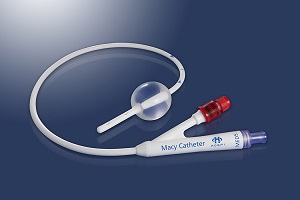 |
| Macy Catheter--Courtesy of Hospi |
The National Science Foundation this week awarded a second research grant to the maker of the only FDA-cleared catheter for rectal delivery of medication and liquids to expand the device's use beyond the hospice.
The Phase 2 Small Business Innovation Research Grant is worth $700,000.
"We look forward to building on the recent launch of the Macy Catheter, our first product, whose development also received NSF support via a Phase 1 SBIR grant," said Igal Ladabaum, CEO of grant winner Hospi. "While the currently available Macy Catheter facilitates rectal delivery of medications primarily in the hospice setting, this grant will help us to develop new capabilities of our technology that may broaden its use beyond the hospice setting to other clinical situations where a patient's oral route is compromised."
The company says other routes of administration, like intravenous drug delivery, are expensive and require lots of training and monitoring, while the sublingual route is limited due to the fact that few medications are effective when used that way. Suppositories are another means of rectal delivery but are a source of discomfort and embarrassment, according to the company.
The Macy Catheter consists of a dual port, dual lumen ballooned tube that is inserted in the rectum. A retention balloon is inflated via the balloon inflation port to hold the device in place.
Of the 1.7 million Americans who receive hospice care each year, 20% are unable to or have difficulty swallowing, says the release. Alternatives to oral delivery are needed for such patients, but hospices rarely use intravenous delivery, according to the Hospi website.
The FDA cleared the device in February. Hospi said the Macy Catheter also enables home healthcare for end-of-life patients. And the company wants to expand the use of the Macy Catheter beyond terminal patients, a goal which the government may enable.
Inventor and hospice nurse Brad Macy was inspired to invent the device after he delivered liquefied medication into a patient's rectum using a urinary catheter.
- read the release